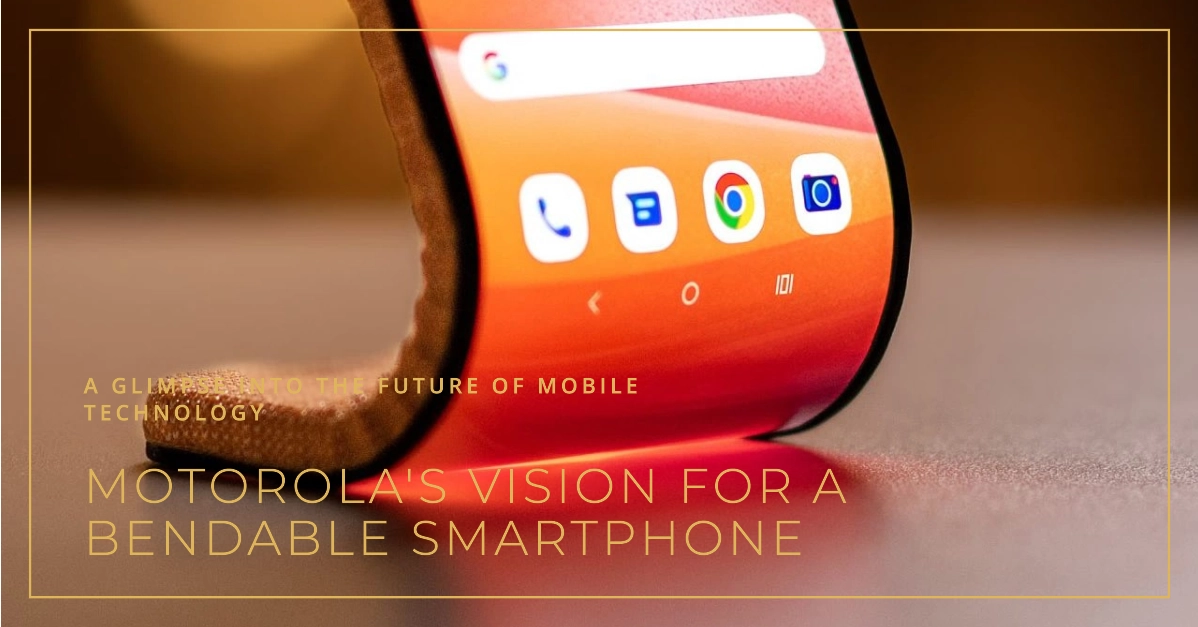Imagine a future where your smartphone isn’t restricted to a rigid rectangular form. A future where it can flex and bend to adjust to your needs, offering enhanced portability and entirely new ways to interact with your digital world. Motorola is driving us closer to this reality with its innovative bendable smartphone concept, promising to revolutionize how we use these ubiquitous devices.
This article dives into what Motorola is envisioning, exploring the potential advantages and the possible hurdles along the way.
Overview
The smartphone has become an indispensable part of modern life. However, their design has remained largely unchanged – a flat, inflexible slab of glass and metal.
Motorola aims to break this mold with its concept for a bendable smartphone. This groundbreaking design would allow users to transform their device on demand, ushering in a new era of smartphone versatility and functionality.
The Concept: What Does It Look Like?
Motorola’s bendable smartphone concept centers around a flexible OLED display. Unlike traditional rigid displays, this screen would be capable of bending or folding without sustaining damage. The exact form factor remains unconfirmed, but early rumors and patents suggest several possibilities:
- Clamshell Fold: Similar to the popular foldable designs like the Samsung Galaxy Z Flip, this would make the device significantly more compact when folded, ideal for pocketability.
- Roll-out Display: A more experimental form factor, a roll-out design would allow a standard-sized smartphone to expand into a mini-tablet form via a hidden, rollable display section.
Potential Benefits of a Bendable Design
A bendable smartphone from Motorola could bring numerous advantages for users:
- Enhanced Portability: A foldable design drastically reduces a phone’s footprint when closed, making it far easier to slip into a pocket or small bag.
- Immersive Media Experiences: The ability to seamlessly expand into a tablet-like form factor would dramatically enhance media consumption experiences, ideal for movies, videos, and gaming.
- Improved Durability: Bendable displays may prove to be more resistant to accidental drops and impacts compared to traditional flat glass screens.
- Multitasking Potential: A larger, foldable display allows for more effective multitasking, allowing you to run multiple apps side-by-side in a comfortable manner.
Challenges to Overcome
Bringing a commercially successful bendable smartphone to market comes with a set of significant challenges that Motorola must address:
- Display Durability: Flexible OLED displays need to be robust enough to withstand repeated bending and unfolding without degrading over time.
- Hinge Mechanism: The hinge is the heart of a foldable device. It must be both extremely durable and offer a smooth, satisfying folding action.
- Cost: The innovative technology required makes bendable smartphones inherently more expensive to produce, posing a barrier for mass market adoption.
- Software Optimization: Android and popular apps need to adapt seamlessly to take full advantage of these unconventional form factors and screen sizes.
The Future of Smartphones
Motorola’s bendable smartphone concept is a glimpse into a potentially transformative future for mobile devices. While challenges remain, the potential for greater portability, expanded functionality and enhanced durability makes this an exciting technological frontier.
If Motorola can overcome the hurdles, bendable smartphones could become the new normal, reshaping our relationship with these ever-present companions.
